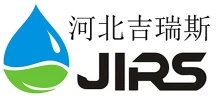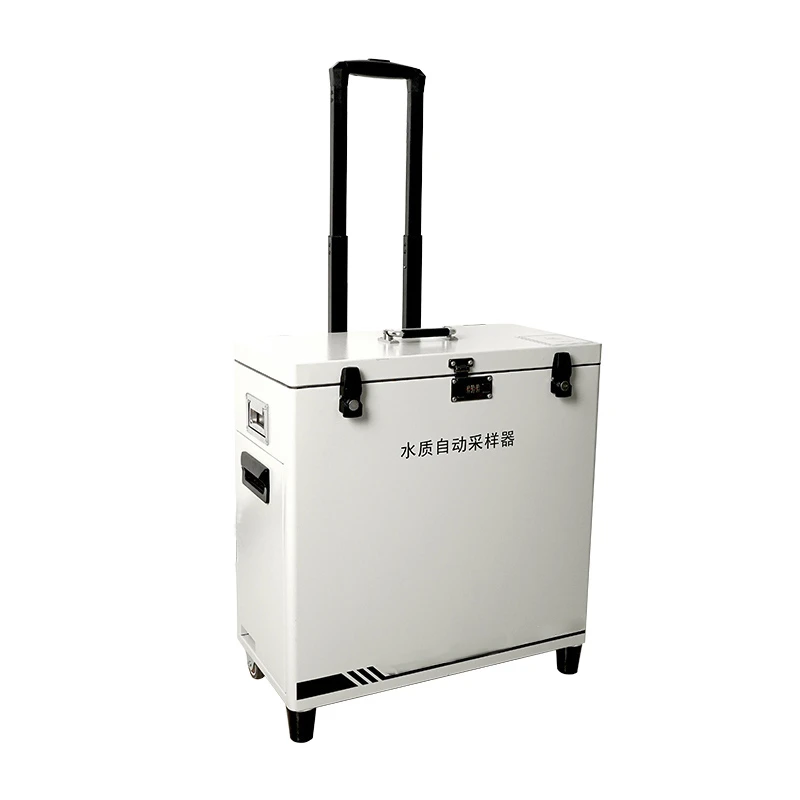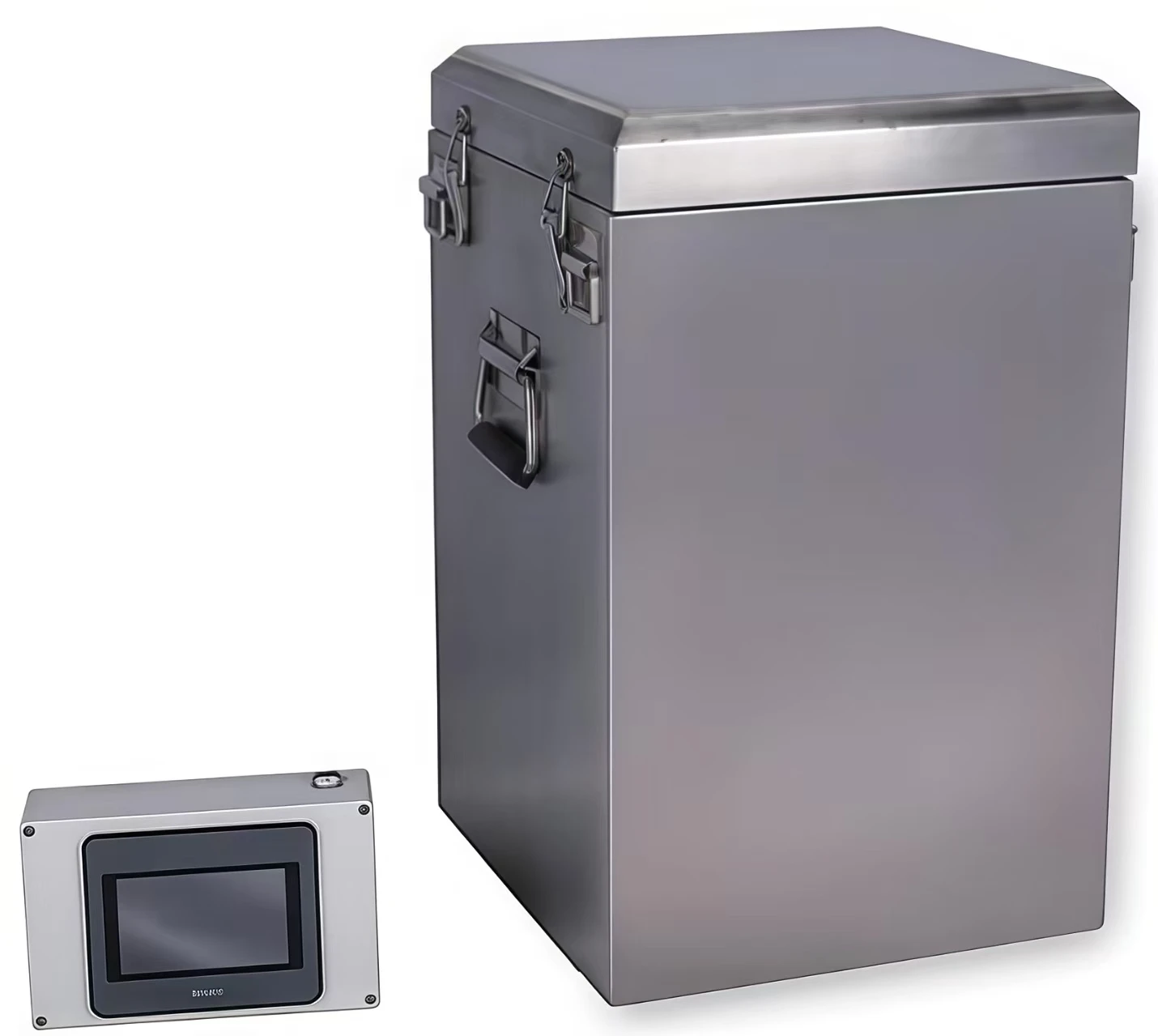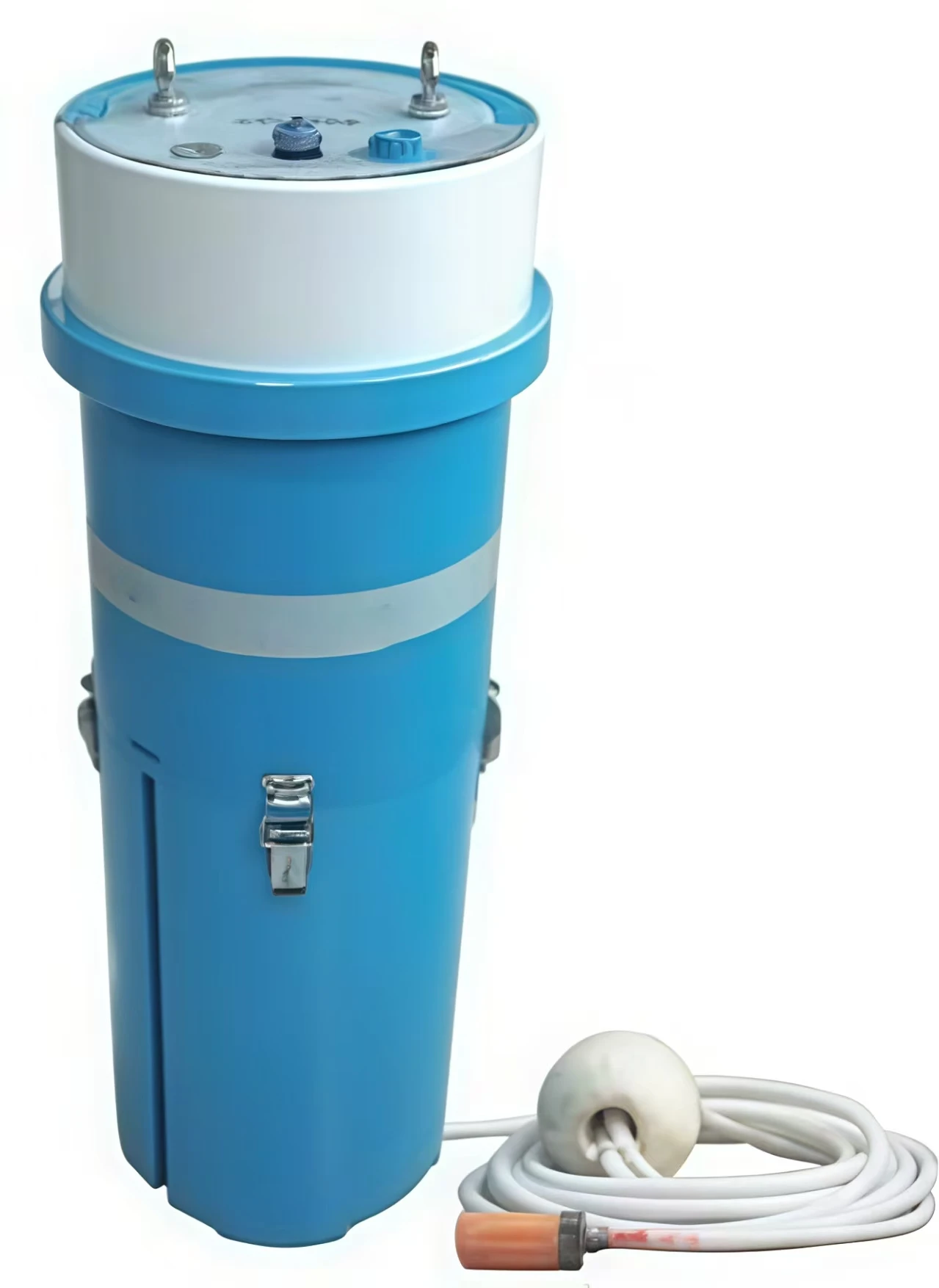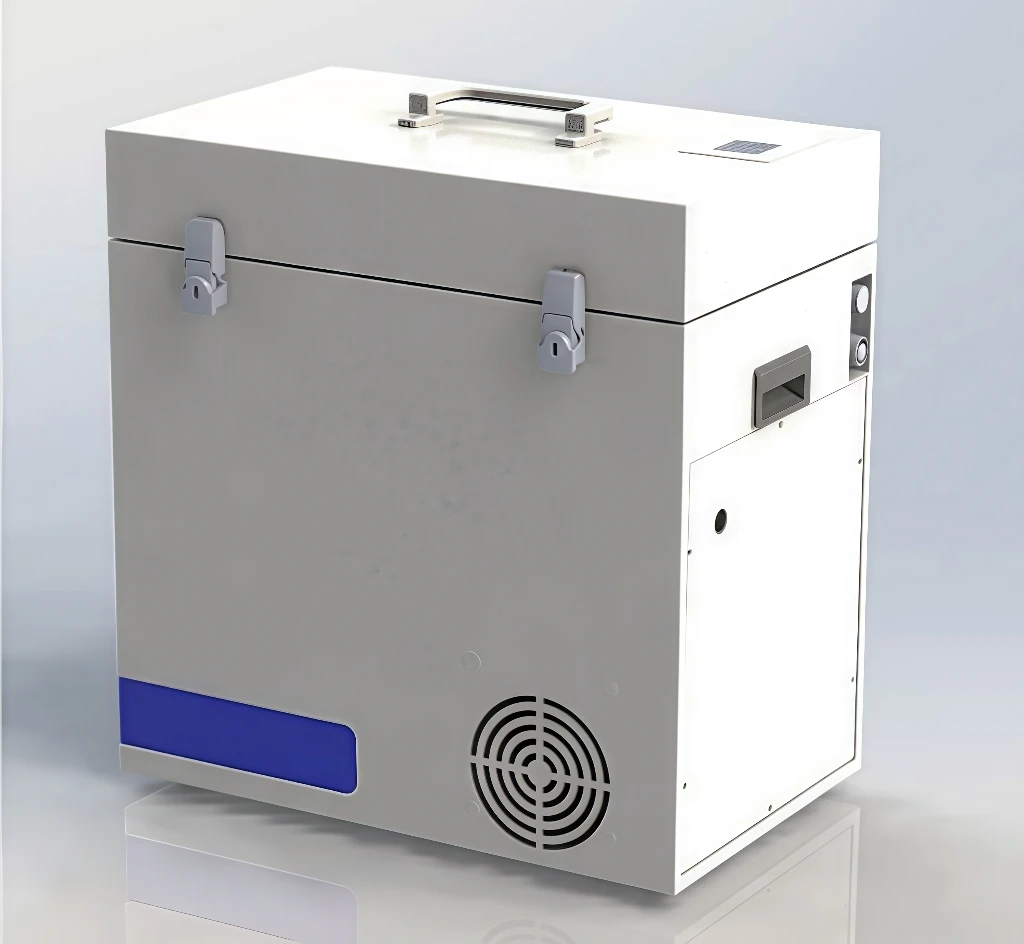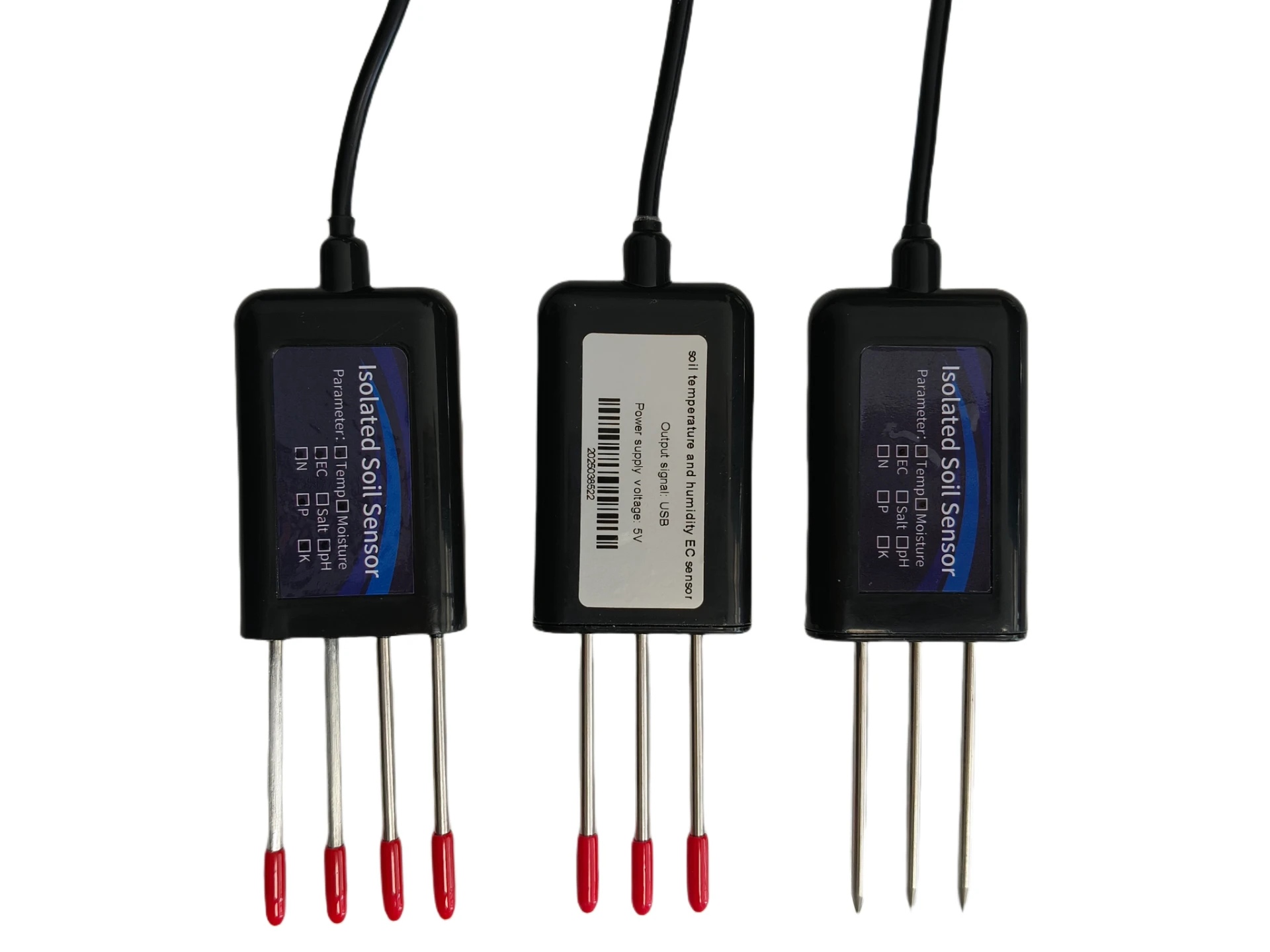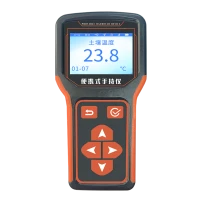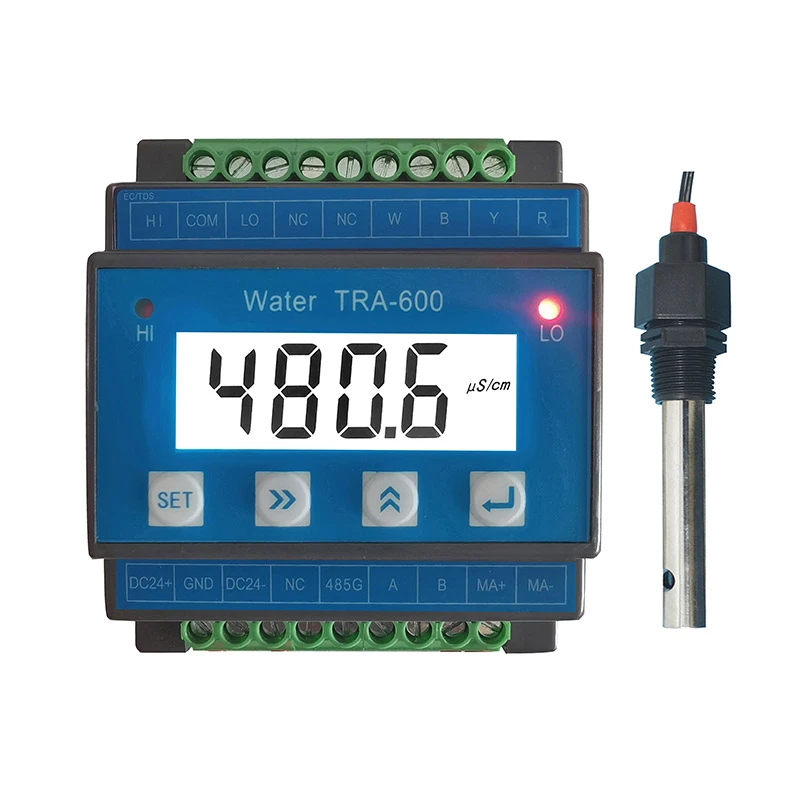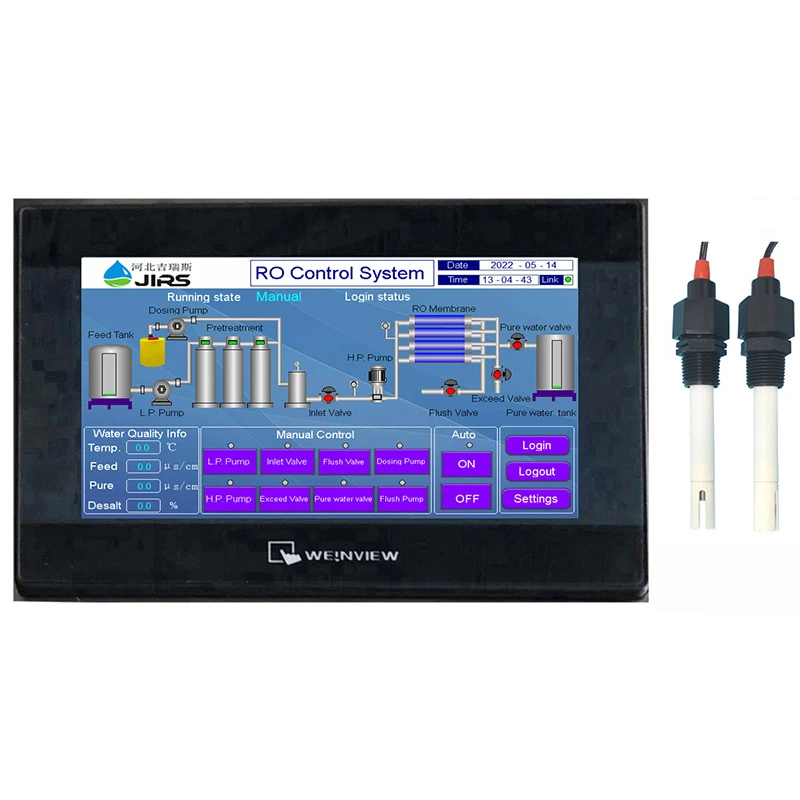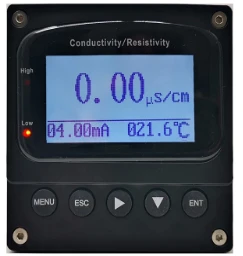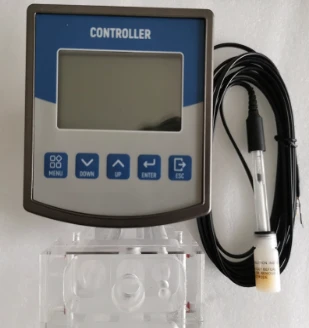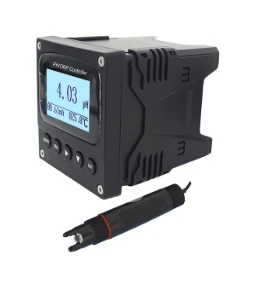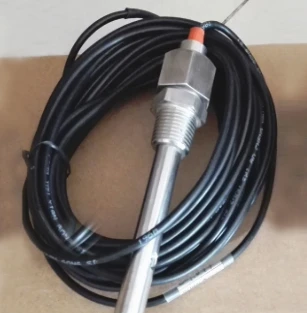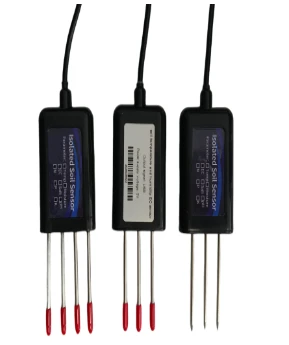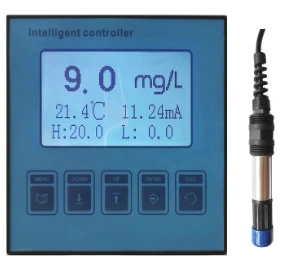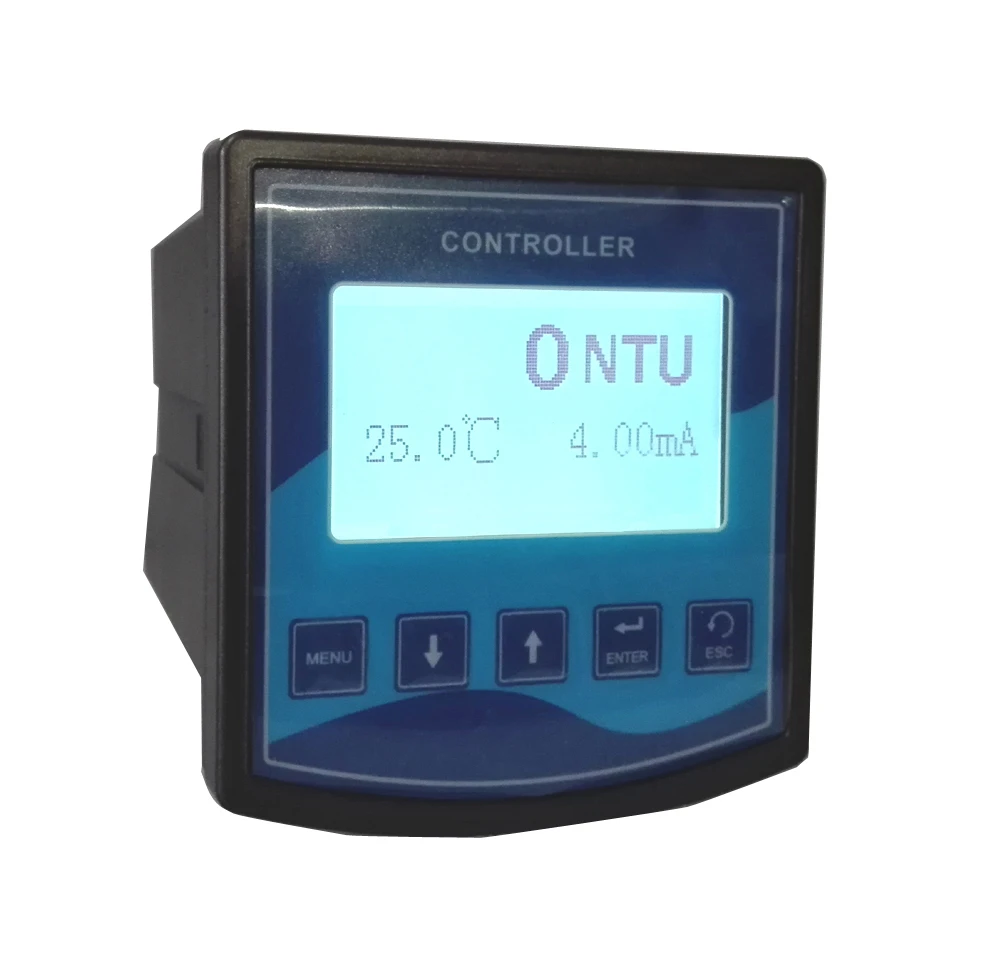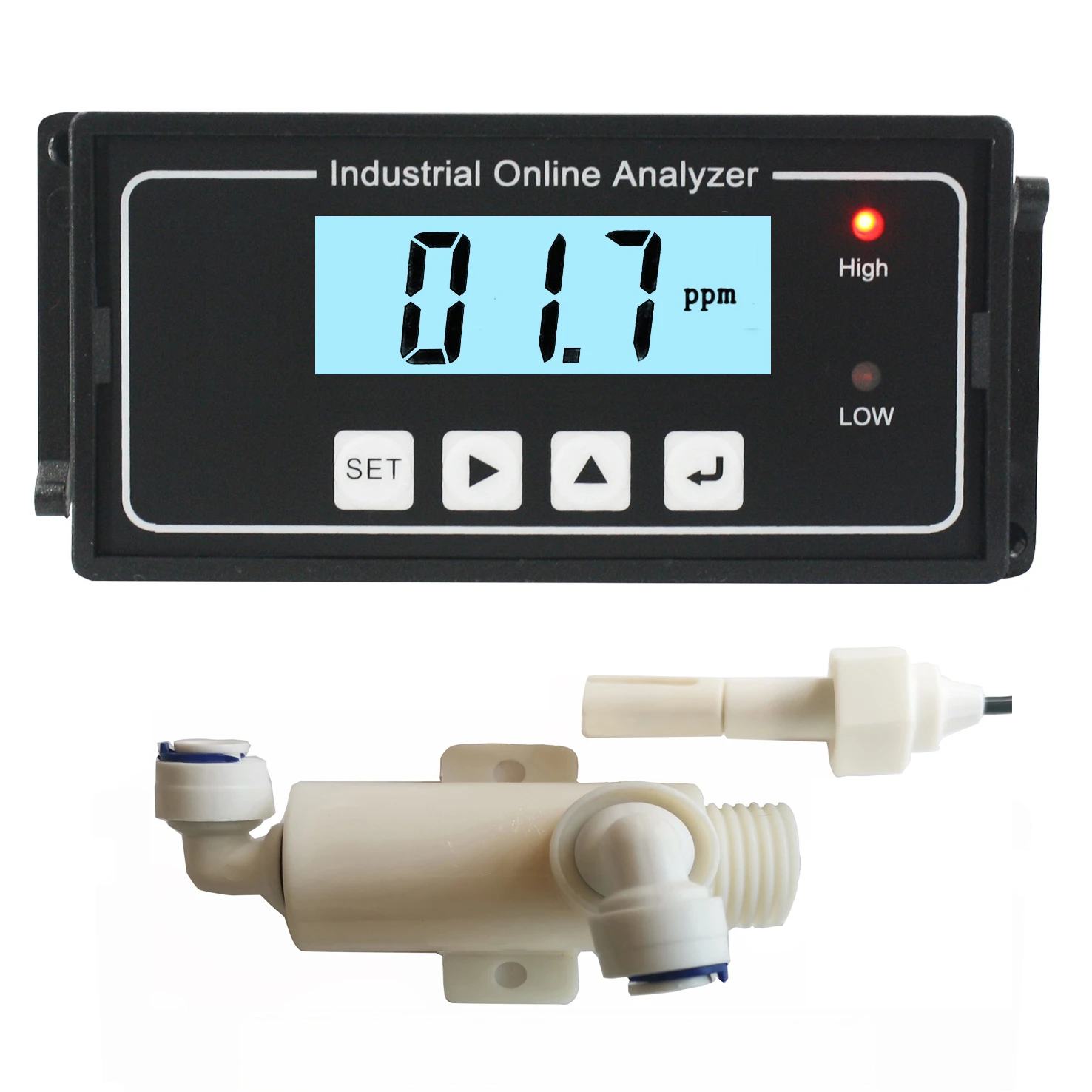YD-6850 High-Performance Industrial Solution - Efficient & Reliable
Ago . 10, 2025
Navigating the Complexities of Water Quality: An In-depth Look at the YD-6850 Online Salinity Transmitting Controller
In today's rapidly industrializing world, the meticulous management of water quality stands as a paramount concern across a multitude of sectors, ranging from municipal water treatment and agriculture to highly specialized industrial processes like power generation, petrochemicals, and pharmaceuticals. Salinity, specifically the concentration of dissolved salts in water, is a critical parameter that significantly impacts operational efficiency, equipment longevity, and the overall quality of end products or treated effluents. Uncontrolled salinity levels can lead to severe issues such as scaling in pipes and heat exchangers, corrosion of valuable assets, degradation of sensitive biological processes, and non-compliance with environmental discharge regulations, incurring substantial financial penalties and reputational damage. The demand for precise, real-time salinity monitoring and control solutions has therefore intensified, pushing the boundaries of technological innovation in the field of analytical instrumentation. Industries are increasingly seeking robust, reliable, and intelligent systems capable of providing continuous data streams, enabling proactive intervention and optimized resource utilization. This paradigm shift from manual, batch sampling to continuous online monitoring is driven by the need for enhanced operational safety, reduced downtime, and improved process control. The global push for sustainable water management practices, coupled with stricter environmental policies, further underscores the indispensability of advanced salinity monitoring tools. Against this backdrop, the YD-6850 Online Salinity Transmitting Controller emerges as a pivotal innovation, designed to address these complex challenges head-on. It represents a confluence of advanced sensor technology, intelligent data processing, and user-friendly interface design, offering an unparalleled solution for industries where precise salinity control is non-negotiable. Its capabilities extend beyond mere measurement, providing comprehensive control functionalities that can be seamlessly integrated into existing SCADA or DCS systems, transforming raw data into actionable insights, and fostering a proactive approach to water management. This detailed exploration delves into the sophisticated engineering and strategic importance of the YD-6850, examining its technical prowess, diverse applications, and the inherent advantages it confers upon its users, especially in demanding environments where accuracy and durability are critical. We will navigate through the intricate manufacturing processes that contribute to its exceptional reliability, explore its adherence to stringent international standards, and present a compelling case for its adoption through a thorough analysis of its features, benefits, and real-world impact. This article serves as a comprehensive resource for B2B decision-makers, engineers, and technical personnel who are tasked with ensuring optimal water quality and operational excellence within their respective domains, providing the expertise, experience, authority, and trustworthiness required to make informed strategic investments in critical infrastructure. The emphasis throughout will be on how the YD-6850 not only meets but exceeds the contemporary demands of industrial water quality management, setting a new benchmark for performance and reliability in a field where precision can dictate success or failure and where downtime translates directly to significant financial losses.
Industry Trends and the Evolving Landscape of Salinity Monitoring
The industrial landscape is constantly evolving, driven by technological advancements, stricter regulatory frameworks, and an increasing awareness of environmental stewardship. In the realm of water quality management, several key trends are shaping the future of salinity monitoring, making solutions like the YD-6850 indispensable. Firstly, there is a clear shift towards greater automation and digitalization, often termed "Industry 4.0" or "Industrial Internet of Things (IIoT)". Traditional manual sampling and laboratory analysis, while accurate, are time-consuming, resource-intensive, and prone to human error, often leading to delayed responses to critical process deviations. The advent of sophisticated online analytical instruments, exemplified by the YD-6850, enables continuous, real-time data acquisition, allowing operators to monitor salinity levels proactively and implement immediate corrective actions through integrated control loops. This integration of sensors, controllers, and advanced data analytics platforms creates intelligent, self-optimizing systems that enhance operational efficiency and reduce the need for constant human oversight, freeing up skilled personnel for more complex tasks. Secondly, the demand for higher precision and wider measurement ranges is growing exponentially across sectors. Many industrial processes now operate under extremely narrow tolerance bands, where even minor fluctuations in salinity can have significant consequences. For instance, in power plants, scaling caused by elevated salinity in cooling water can drastically reduce heat exchange efficiency, leading to higher energy consumption, increased carbon footprint, and potential catastrophic equipment failure. The YD-6850 is engineered to meet these stringent accuracy requirements, providing reliable measurements across a broad spectrum of salinity concentrations, from ultra-pure water to highly concentrated brines, thus supporting a diverse array of applications without compromising data integrity. Thirdly, sustainability and resource efficiency are becoming central to operational strategies, driven by both corporate responsibility and economic necessity. Industries are under immense pressure to minimize fresh water consumption, reduce wastewater discharge, and recover valuable resources from wastewater streams. Effective salinity control is crucial for advanced water treatment processes like reverse osmosis (RO) and other membrane filtration systems, where high salinity can rapidly foul membranes, reduce their lifespan, necessitate costly replacements, and significantly increase the energy consumption required for filtration. By providing precise and continuous control, the YD-6850 directly contributes to optimizing these resource-intensive processes, extending membrane life, reducing chemical consumption, and minimizing the overall environmental footprint, making operations more sustainable and cost-effective. Fourthly, there's a heightened emphasis on robust and low-maintenance equipment. Industrial environments are often harsh, characterized by extreme temperatures, corrosive chemicals, high pressures, and physical stresses, which can rapidly degrade standard equipment. Equipment failure in such conditions can lead to costly downtime, safety hazards, and significant production losses. Manufacturers are responding by developing instruments with superior material science and rugged designs, ensuring long-term reliability and reduced operational expenditures. The YD-6850, through its selection of high-grade, corrosion-resistant materials and robust, IP65-rated construction, exemplifies this trend, offering exceptional durability and minimal maintenance requirements even in the most challenging industrial settings. Finally, interoperability and ease of integration into existing control systems are critical for seamless adoption. Modern industrial facilities rely on complex distributed control systems (DCS) and supervisory control and data acquisition (SCADA) systems to manage myriad processes efficiently. New analytical instruments must be able to communicate seamlessly with these platforms, providing data in formats that can be easily processed, analyzed, and visualized within the plant's existing automation infrastructure. The YD-6850 features versatile communication protocols, including standard 4-20mA outputs and RS485 MODBUS RTU, making it an ideal, plug-and-play component for advanced industrial automation architectures, enabling rapid deployment and immediate value creation. These trends collectively underscore the imperative for sophisticated, reliable, and integrated salinity monitoring solutions like the YD-6850, positioning it as an essential tool for future-proofing industrial operations and ensuring compliance in an increasingly regulated and environmentally conscious global market.
Unveiling the Technical Prowess: Detailed Parameters of the YD-6850 Controller
The efficacy and reliability of any online analytical instrument are fundamentally rooted in its technical specifications and the precision of its design, determining its suitability for demanding industrial applications. The YD-6850 Online Salinity Transmitting Controller stands out in the market due to its meticulously engineered parameters, designed to deliver unparalleled accuracy and stability in even the most challenging industrial environments. At its core, the device employs advanced conductivity measurement principles, utilizing a robust conductivity cell that is resistant to fouling, corrosion, and chemical attack, ensuring long-term, stable performance even in highly aggressive media. Its measurement range is exceptionally broad, typically spanning from 0.01 µS/cm to 200.00 mS/cm, which translates to a salinity range of 0.00 to 20.00 parts per thousand (ppt). This expansive range allows it to accurately assess salinity across a wide spectrum of applications, from monitoring trace conductivity in ultra-pure water systems used in semiconductor manufacturing to managing high concentrations in seawater desalination plants and brine concentration processes. This wide operational span, coupled with a high resolution (e.g., 0.01 ppt for salinity and 0.01 µS/cm for conductivity) and impressive accuracy (typically ±1.5% FS for salinity and ±1.0% FS for conductivity), makes the YD-6850 exceptionally versatile for diverse industrial requirements. Temperature compensation is a critical feature for accurate conductivity and salinity measurements, as these parameters are highly temperature-dependent. The YD-6850 incorporates a sophisticated automatic temperature compensation (ATC) system, often utilizing a high-precision PT1000 or NTC10K thermistor, ensuring that readings are normalized to a standard temperature (e.g., 25°C) for consistent and comparable results, irrespective of process temperature fluctuations between 0 to 100°C. This intelligent compensation minimizes measurement errors caused by thermal variations. Output options are highly flexible, crucial for seamless integration into diverse control architectures. Standard outputs include isolated 4-20mA current outputs, configurable for salinity, conductivity, or temperature, enabling direct, interference-free connection to Programmable Logic Controllers (PLCs), Distributed Control Systems (DCS), or Supervisory Control and Data Acquisition (SCADA) systems. Furthermore, multiple relay outputs (e.g., three sets of SPDT ON/OFF relays, rated at 250V AC/3A) are typically available for alarm functions or direct process control, allowing automated triggering of pumps, valves, or warning indicators based on user-defined high/low setpoints, enabling proactive process management. Digital communication protocols often extend to RS485 MODBUS RTU, facilitating robust digital data transmission and remote monitoring and control, compatible with modern industrial communication networks. The power supply requirements are standard for industrial applications, typically 220V AC ±10% at 50/60Hz, with an optional 24V DC variant available, ensuring broad compatibility with existing power infrastructure globally. The housing of the YD-6850 is meticulously designed for maximum durability and protection, often constructed from IP65-rated engineering plastic, providing excellent protection against dust and strong jets of water, making it suitable for both indoor and outdoor installations in challenging industrial settings. The display interface is typically a large, high-contrast LCD with backlighting, providing clear visibility of real-time measurements, status indicators, alarm messages, and operational parameters, often supporting multiple language options for global usability. User calibration is straightforward, often supporting single-point, two-point, or multi-point calibration methods, enhancing the instrument's adaptability to specific solutions and maintaining its accuracy over time. Built-in diagnostic functions continuously monitor sensor health and system integrity, providing proactive alerts for maintenance needs or sensor degradation, minimizing unscheduled downtime. These comprehensive technical specifications underscore the YD-6850's capability to deliver precise, reliable, and actionable data, serving as a cornerstone for effective water quality management and process optimization across a wide array of industrial applications where salinity is a critical control parameter, significantly contributing to the overall operational efficiency, compliance, and asset protection.
Key Technical Specifications of YD-6850
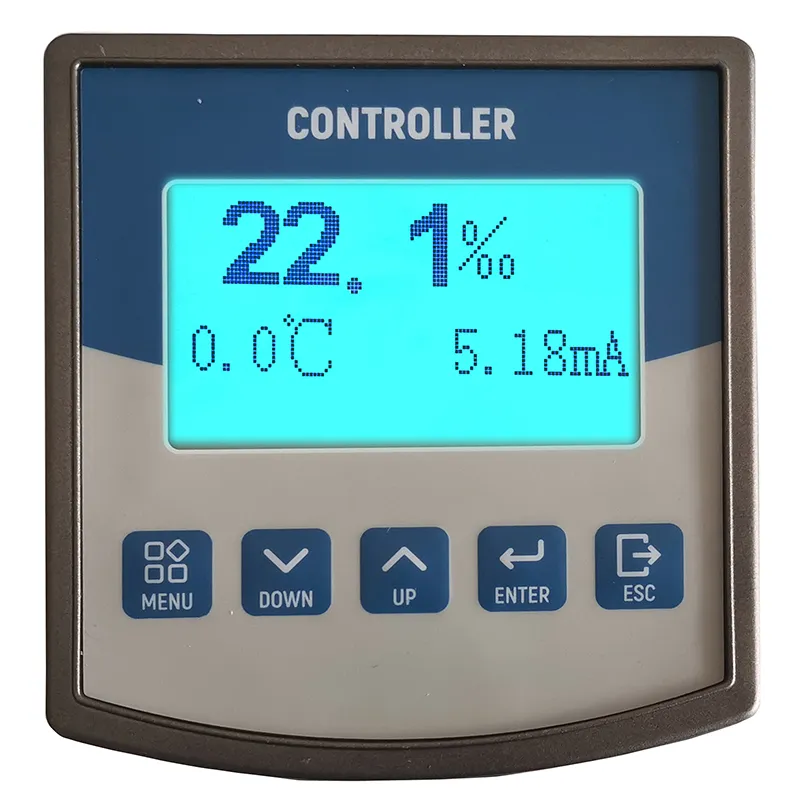 Figure 1: User-friendly interface of the YD-6850 controller, providing clear real-time data visualization and intuitive navigation for salinity and conductivity.
Figure 1: User-friendly interface of the YD-6850 controller, providing clear real-time data visualization and intuitive navigation for salinity and conductivity.
The Manufacturing Excellence: Crafting the YD-6850 for Unwavering Performance
The superior performance, remarkable accuracy, and exceptional longevity of the YD-6850 Online Salinity Transmitting Controller are not merely a result of innovative design but are deeply rooted in a rigorous and meticulously controlled manufacturing process, which underpins its exceptional quality and reliability in the most challenging industrial conditions. The journey of each YD-6850 unit begins with the uncompromising selection of premium-grade materials, crucial for ensuring durability and consistent performance in harsh industrial environments. For the sensor's conductivity cell, materials such as 316L stainless steel, high-purity titanium, or specialized engineering plastics (like PEEK or PVDF) are precisely chosen for their inherent corrosion resistance, chemical inertness, excellent mechanical strength, and ability to resist biofouling, allowing the sensor to withstand aggressive media, high temperatures, and pressures without degradation or interference with measurement accuracy. The transmitter's robust enclosure often utilizes durable, high-impact ABS or PC (Polycarbonate) materials, meticulously molded to achieve an IP65 or even higher ingress protection rating, rigorously safeguarding internal sensitive electronics from dust, moisture, and chemical splashes that are common in industrial settings. The manufacturing process itself adheres to stringent international quality standards, most notably ISO 9001 for quality management systems, ensuring complete traceability, consistency, and continuous improvement at every stage of production. Key manufacturing processes include precision CNC (Computer Numerical Control) machining for the intricate sensor probes and housing components, guaranteeing exact dimensions and extremely tight tolerances for optimal fit, sealing, and reliable function. This high-precision machining minimizes potential leak paths and ensures accurate sensor alignment, which is critical for consistent and repeatable measurement. Advanced injection molding techniques are employed for the primary housing units, creating seamless, robust, and aesthetically consistent enclosures. Automated soldering and assembly lines are utilized for the printed circuit boards (PCBs), ensuring reliable electronic connections, minimizing human error, and enhancing component density for compact design. Before assembly, all electronic components undergo rigorous incoming quality control (IQC) inspections, and critical components like microcontrollers, communication modules, and display units are sourced exclusively from reputable, certified suppliers, guaranteeing their quality and longevity. Each assembled YD-6850 undergoes a series of comprehensive in-process and final testing protocols designed to identify any potential imperfections. This includes multi-stage electrical safety testing (e.g., hipot testing, insulation resistance checks), exhaustive functional testing of all outputs (4-20mA, relays, RS485), and highly accurate calibration against certified reference standards traceable to national and international metrology institutes. Environmental stress screening (ESS) methods, such as extended burn-in tests in temperature and humidity chambers, are routinely applied to identify and weed out infant mortality failures, significantly enhancing the product's long-term reliability and reducing the likelihood of early field failures. Furthermore, rigorous pressure testing and advanced leak detection are performed on the sensor assemblies to ensure integrity under diverse operational pressures. Adherence to industry-specific standards like ANSI for dimensional accuracy, relevant ASTM standards for material properties, and IEC standards for electrical safety further ensures the YD-6850's universal compatibility and superior performance across various industrial setups globally. The expected service life of a well-maintained YD-6850 unit can easily exceed 5-7 years, with many installations lasting over a decade, a powerful testament to its robust construction and meticulous manufacturing processes. Its design inherently prioritizes longevity and minimal maintenance, significantly reducing the total cost of ownership (TCO) for end-users. In industries such as petrochemicals, where equipment must endure corrosive chemicals and extreme temperatures, the YD-6850’s inherent anti-corrosion properties and durable construction are paramount for safety and operational continuity. In metallurgy, accurate salinity control in quenching or cooling water prevents scale buildup and preserves expensive processing equipment. For municipal water supply and drainage networks, its unwavering reliability ensures continuous monitoring of treated water quality, directly supporting public health and environmental compliance. The collective emphasis on selecting high-quality materials, implementing stringent manufacturing processes, and enforcing comprehensive testing protocols not only ensures the YD-6850's exceptional accuracy and reliability but also significantly contributes to its economic advantages, such as energy savings through optimized process control and reduced maintenance due to its robust, anti-corrosion design, showcasing its role as a strategic, long-term asset in demanding industrial applications worldwide.
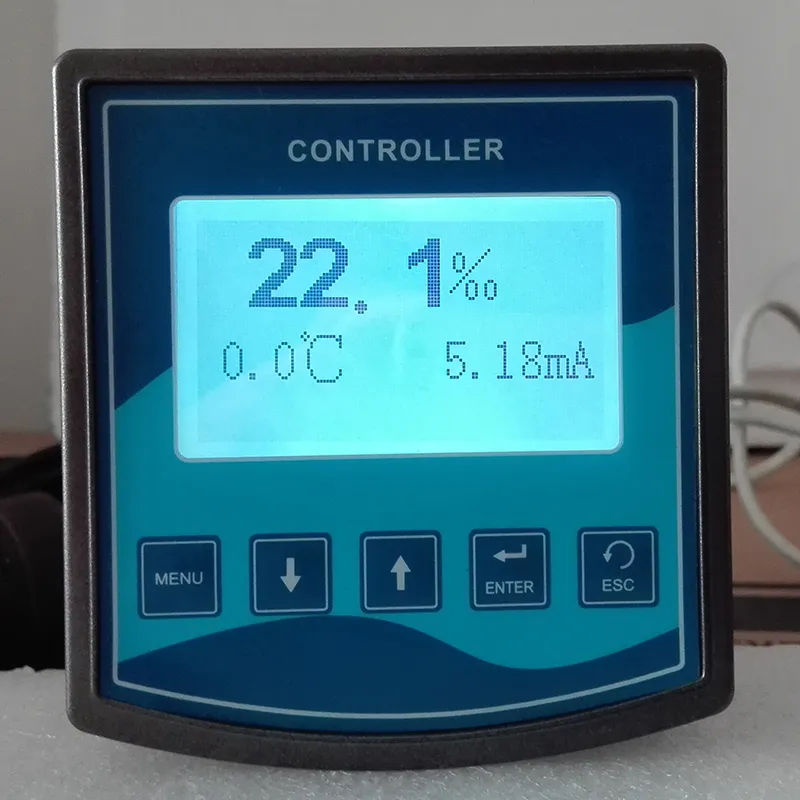 Figure 2: Close-up of the robust sensor probe, engineered for exceptional durability and superior corrosion resistance, forming a critical component of the YD-6850 system.
Figure 2: Close-up of the robust sensor probe, engineered for exceptional durability and superior corrosion resistance, forming a critical component of the YD-6850 system.
Diverse Application Scenarios and Distinct Technical Advantages of YD-6850
The unparalleled versatility of the YD-6850 Online Salinity Transmitting Controller is powerfully demonstrated by its successful applicability across an exceptionally broad spectrum of industrial and municipal sectors, each benefiting uniquely and significantly from its precise, reliable, and continuous performance. In the crucial wastewater treatment industry, managing salinity is not merely about compliance but about protecting delicate biological processes and ensuring the integrity of effluent discharge into receiving water bodies. High salinity can inhibit microbial activity in bioreactors and render treated water unsuitable for reuse or safe environmental discharge. The YD-6850 ensures continuous, real-time monitoring of various points within the treatment train, allowing operators to optimize dilution strategies, rapidly identify and mitigate industrial contamination sources, and consistently adhere to increasingly strict discharge limits, thereby safeguarding ecosystems and dramatically reducing the risk of costly regulatory fines and reputational damage. For desalination plants, particularly those employing energy-intensive Reverse Osmosis (RO) technology, precise salinity monitoring is at the absolute core of operational efficiency and membrane longevity. The YD-6850 can effectively monitor raw water intake quality, verify pre-treatment efficacy (e.g., flocculation, filtration), assess permeate quality to ensure it meets drinking water standards, and precisely control brine concentration in the reject stream. This critical data allows operators to optimize membrane performance, reduce scaling and fouling, and ensure the consistent production of high-purity water, ultimately extending membrane lifespan by up to 20-30% and lowering overall energy consumption through optimized pressure settings and reduced cleaning cycles. In power generation, especially for thermal and nuclear power plants, maintaining stringent water quality is paramount for boiler feed water, cooling towers, and condensate return systems. Elevated salinity can lead to severe corrosive scaling, stress corrosion cracking in boiler tubes, and significantly reduced heat transfer efficiency in condensers, leading to massive energy losses, unscheduled downtime, and potentially catastrophic equipment failures. The YD-6850's ability to provide real-time, highly accurate salinity data enables precise chemical dosing for scale and corrosion inhibition, optimized blowdown control in cooling towers to manage cycles of concentration, and early detection of condenser leaks, directly contributing to substantial energy savings, enhanced equipment protection, and uninterrupted power generation, critical for grid stability. The food and beverage industry requires exceptionally stringent control over water quality for process water, cleaning-in-place (CIP) systems, and final product integrity. Salinity control ensures consistent product taste profiles, prevents microbial contamination, and optimizes the effectiveness of cleaning cycles, reducing chemical usage and water consumption. In aquaculture, maintaining optimal and stable salinity levels is fundamentally vital for the health, growth, and survival of aquatic species. The YD-6850 offers continuous environmental monitoring within ponds or recirculating aquaculture systems, critical for preventing osmotic stress, disease outbreaks, and ensuring optimal feed conversion ratios. Beyond these specific applications, the YD-6850 offers compelling technical advantages that solidify its position as a leading solution. Firstly, its high precision and exceptionally wide measurement range ensure suitability for diverse applications, from detecting parts-per-billion (ppb) level salinity in ultra-pure water to measuring highly concentrated brines in mining or chemical processes. Secondly, its advanced automatic temperature compensation (ATC) capability ensures that readings are consistently accurate and reliable regardless of process temperature fluctuations, eliminating the need for manual adjustments and dramatically improving data integrity and comparability. Thirdly, the robust and corrosion-resistant sensor design, often utilizing industrial-grade materials like 316L stainless steel, titanium, or specialized plastics, allows for seamless deployment in aggressive chemical environments, high-temperature streams, and abrasive slurries without compromising integrity or accuracy, leading to significantly extended service life and reduced replacement costs. Fourthly, the user-friendly interface and intuitive, multi-point calibration procedures minimize operator training time, simplify routine maintenance tasks, and reduce potential human error, enhancing overall operational efficiency. Finally, the versatile output options (isolated 4-20mA, RS485 MODBUS RTU, and multiple configurable relay outputs) ensure seamless integration with virtually all existing industrial control systems (PLCs, DCS, SCADA), enabling sophisticated automated control, comprehensive remote monitoring, and robust data logging, which are crucial for advanced process optimization, predictive maintenance, and stringent regulatory compliance. These combined features underscore the YD-6850 as a superior, all-encompassing solution, delivering not just raw measurements, but actionable intelligence that strategically drives efficiency, ensures compliance, and proactively safeguards critical assets across numerous demanding industrial sectors where salinity is a critical and sensitive control parameter, ultimately contributing to significant operational savings and environmental sustainability.
Choosing Wisely: Why YD-6850 Stands Out Among Salinity Control Solutions
In a competitive market saturated with various salinity monitoring and control solutions, distinguishing between options and making an informed, strategic investment decision is crucial for B2B stakeholders, as the choice can significantly impact long-term operational costs, reliability, and compliance. While many manufacturers offer online conductivity or salinity controllers, the YD-6850 differentiates itself through a formidable combination of superior engineering, comprehensive features, and an unwavering commitment to reliability, offering a compelling value proposition that consistently surpasses generic or less robust alternatives. A primary differentiator lies in the calibration stability and minimal drift characteristics. Generic or lower-quality controllers often suffer from significant sensor drift and require frequent, often disruptive, re-calibration, leading to increased maintenance costs, potential measurement inaccuracies that can impact process control, and considerable operational downtime. The YD-6850, engineered with high-grade, premium materials and subjected to precise manufacturing processes, exhibits exceptional long-term stability and minimal sensor drift. This significantly reduces the frequency of calibration and ensures consistent accuracy over extended periods, translating directly into lower operational expenditure (OpEx), greater process reliability, and reduced labor costs. Furthermore, the durability and material integrity of the sensor probe and transmitter housing are paramount for industrial longevity. While some competitor controllers may utilize standard plastics or lower-grade stainless steel that corrode quickly, limiting their applicability in corrosive or high-temperature environments, the YD-6850's deliberate use of advanced materials like 316L stainless steel, high-purity titanium, or specialized high-performance polymers (e.g., PEEK, PVDF) ensures superior resistance to chemical attack, abrasion, extreme temperatures, and biofouling. This robust, industrial-grade construction dramatically extends the lifespan of the instrument, drastically reducing the frequency of replacements and the associated capital expenditure (CapEx) while maintaining consistent measurement integrity even in the most aggressive media. Another key area of distinction is the sophistication of its automatic temperature compensation (ATC) algorithm. Accurate temperature compensation is fundamentally vital for reliable conductivity and salinity measurements, as temperature significantly influences these readings. The YD-6850 incorporates an advanced, multi-point ATC algorithm coupled with high-precision temperature sensors, which provide more accurate and linear compensation across a wider temperature range compared to simpler, linear compensation methods often found in some competitor products. This intelligent compensation ensures measurement integrity and consistency under widely varying process conditions, reducing measurement uncertainty. The flexibility of integration and breadth of communication protocols also significantly sets the YD-6850 apart. While basic controllers might offer only a single 4-20mA analog output, the YD-6850 typically includes both isolated 4-20mA analog output and robust RS485 MODBUS RTU digital communication, along with multiple configurable relay outputs for alarm and control. This comprehensive suite of communication options enables seamless and versatile integration into diverse and complex industrial automation systems, supporting both analog and digital control strategies, and facilitating advanced data acquisition, remote monitoring, and sophisticated diagnostic capabilities that simpler models often lack, providing a holistic solution for process control. Moreover, the user experience and intelligent diagnostic functions within the YD-6850 are meticulously designed for industrial professionals. Features like large, multi-parameter LCD displays with clear backlighting, intuitive menu navigation, and self-diagnostic alerts for sensor health or potential operational issues significantly enhance usability, reduce the need for extensive operator training, and facilitate proactive maintenance, minimizing troubleshooting time and reliance on specialized technical support compared to systems with opaque interfaces or limited diagnostic tools. The overall total cost of ownership (TCO) becomes a powerful and compelling argument for the YD-6850. While its initial investment might be slightly higher than entry-level or budget-oriented models, its superior accuracy, significantly extended service life, drastically reduced maintenance requirements, enhanced operational efficiency, and improved data reliability collectively translate into substantial long-term savings from minimized downtime, optimized chemical usage, reduced energy consumption, avoidance of costly equipment failures, and prevention of non-compliance penalties. In essence, opting for the YD-6850 is not just purchasing a controller; it's making a strategic investment in a reliable, high-performance, and future-proof solution that delivers tangible, measurable benefits and a substantial return on investment in the critical domain of industrial water quality management, offering a clear and sustainable competitive edge over less capable alternatives.
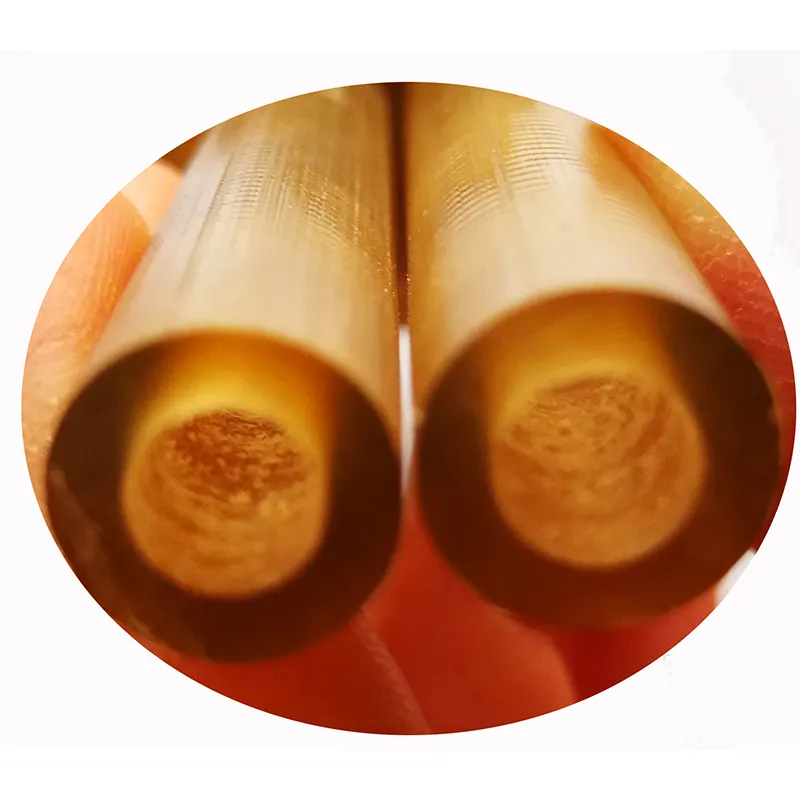 Figure 3: Demonstrating the versatile installation options and robust build quality of the YD-6850, engineered for challenging industrial environments.
Figure 3: Demonstrating the versatile installation options and robust build quality of the YD-6850, engineered for challenging industrial environments.
Tailored Excellence: Customization Solutions with YD-6850
Recognizing that no two industrial applications are exactly alike, and that specific operational contexts often demand nuanced solutions beyond standard configurations, the ecosystem surrounding the YD-6850 Online Salinity Transmitting Controller emphasizes unparalleled flexibility and tailored customization. While the standard YD-6850 unit is meticulously engineered to meet a broad and demanding range of industrial requirements, the ability to adapt its configurations and integrate it seamlessly into highly specialized systems is a significant and often critical advantage for B2B clients facing unique challenges in their water quality management. Customization options often begin with the sensor probe material and design, which is crucial for chemical compatibility and measurement accuracy in diverse media. For instance, in applications involving extremely aggressive chemicals, very high temperatures, or abrasive slurries, standard stainless steel probes might be insufficient or degrade rapidly. Here, customized probes made from exotic alloys like Hastelloy, Inconel, or specialized ceramics (e.g., zirconia), or highly robust engineering plastics like PEEK or PVDF, can be provided. Furthermore, the sensor's cell constant can be optimized to fine-tune the measurement range for specific concentration levels, such as ultra-low salinity in deionized water for pharmaceutical or semiconductor industries, or very high salinity in highly concentrated brines from mining operations. This ensures maximum longevity, unparalleled accuracy, and minimal maintenance even in the most challenging process conditions. Moreover, mounting options and extended cable lengths can be precisely customized to fit specific installation requirements, whether it's extended cable runs for remote sensor placement in large facilities, specialized immersion depths for deep tanks, or unique flow-through cell designs engineered for inline measurements within specific pipe sizes or reactors. The output signal and communication protocols can also be adjusted beyond the standard offerings. While 4-20mA analog output and RS485 MODBUS RTU digital communication are widely compatible with most modern industrial control systems, some legacy systems or highly specialized DCS setups might require specific proprietary digital protocols, or even wireless communication modules for applications where hardwiring is impractical or cost-prohibitive. Experienced manufacturers can offer firmware modifications or integrate specialized hardware to accommodate these unique requirements, ensuring perfect interoperability and minimizing the need for costly and disruptive overhauls of existing infrastructure. Software customization for the controller's interface, internal control logic, or data processing algorithms is another highly valued possibility. For example, a client might require custom multi-level alarm setpoints with cascading escalation procedures, specific data logging frequencies for compliance reporting, or direct integration with proprietary SCADA visualization tools or plant-specific historians. The YD-6850's advanced programmable nature allows for such sophisticated software tailoring, ensuring the controller's functionality aligns perfectly with the client's precise operational procedures, reporting needs, and long-term data analysis strategies. Enclosure modifications can also be crucial for environmental resilience. While the standard IP65 rating is robust for many applications, some extreme environments might demand NEMA 4X ratings for even higher chemical resistance, or explosion-proof enclosures for installation in hazardous areas classified by ATEX or NEC standards. These highly specialized enclosures can be designed, manufactured, and certified to meet the most stringent safety and environmental regulations, ensuring safe and reliable operation in classified zones. Moreover, providers can offer integrated solutions involving the YD-6850 with other complementary analytical instruments (e.g., pH, ORP, dissolved oxygen, turbidity sensors) or complete pre-fabricated monitoring stations. These solutions might include custom panel-mounted systems with integrated flow cells, pre-wired for plug-and-play installation, or mobile monitoring units for temporary deployment. These comprehensive, single-vendor packages significantly reduce installation complexity, streamline commissioning, and ensure total system compatibility, providing a truly holistic solution for complex water quality monitoring needs. Such tailored solutions are typically developed through close, iterative collaboration with the client, involving detailed site assessments, thorough process analysis, and iterative design reviews, all backed by a dedicated team of experienced application engineers, chemists, and automation specialists. This collaborative approach ensures that the customized YD-6850 system delivers optimal performance, maximum return on investment, and seamless, long-term integration into the client's unique operational ecosystem, reflecting a profound commitment to solving specific industrial challenges with unparalleled precision, innovation, and long-term support.
Real-World Impact: Illustrative Application Cases of YD-6850 in Action
The theoretical advantages and impressive technical specifications of the YD-6850 Online Salinity Transmitting Controller are powerfully affirmed by its successful and impactful deployment in a myriad of challenging real-world industrial scenarios across the globe. These application cases unequivocally underscore its robust performance, unwavering reliability, and the tangible, measurable benefits it consistently delivers to diverse operations, significantly improving process control, reducing costs, and ensuring compliance. Consider, for instance, a large seawater desalination plant utilizing advanced reverse osmosis technology in a water-stressed region of the Middle East. Prior to implementing the YD-6850, the plant struggled with inconsistent permeate water quality, frequent and costly membrane fouling, and high energy consumption, leading to reduced overall water output and increased operational expenditures. By strategically installing multiple YD-6850 units at various critical points—including raw water intake, post-pre-treatment filtration outlets, post-RO permeate lines, and within the concentrated brine reject streams—the plant operators gained unprecedented real-time insight into dynamic salinity levels throughout the entire process. This continuous, accurate data allowed them to precisely adjust antiscalant dosing, optimize flushing and cleaning cycles for the RO membranes, and rapidly detect any membrane integrity breaches, enabling immediate corrective action. The documented result was a significant 15% reduction in energy consumption per cubic meter of water produced due to optimized pressure settings, a remarkable 20% extension in valuable membrane lifespan, and a consistent adherence to stringent potable water standards, dramatically improving operational efficiency and overall profitability. Another compelling success story comes from a major chemical manufacturing facility in Southeast Asia, which handles highly corrosive solutions and operates a complex cooling water system. The plant's cooling water system was highly susceptible to localized corrosion and severe scaling due to fluctuating salinity levels, leading to premature failure of expensive heat exchangers and extensive pipeline degradation, resulting in frequent, costly repairs and production interruptions. Integrating the YD-6850 into their cooling tower blowdown control system enabled precise, automated regulation of the cycles of concentration. By maintaining optimal salinity levels, the corrosion rates observed in the cooling water system decreased by over 30% within six months, and the need for labor-intensive manual descaling operations was virtually eliminated, leading to substantial savings in maintenance costs, extended asset life, and a dramatic improvement in equipment uptime and reliability. In the municipal wastewater treatment sector, a large urban treatment plant in North America faced increasing pressure to meet stricter environmental discharge limits for total dissolved solids (TDS) and salinity, particularly during peak industrial discharge periods or unusual weather events. Implementing the YD-6850 at the final effluent point provided continuous, highly accurate salinity data, allowing the plant to fine-tune its various biological and chemical treatment processes, including aeration rates, chemical flocculation, and nutrient removal, in real-time based on actual influent conditions. This proactive, data-driven approach ensured consistent and reliable compliance with stringent discharge regulations, avoiding hefty penalties and significantly contributing to local environmental protection and public health. Furthermore, the detailed data collected by the YD-6850 helped identify specific industrial contributors to sudden high salinity events, enabling targeted engagement and the implementation of effective source control strategies with industrial partners. A more niche, yet equally impactful, example involves a commercial aquaculture farm specializing in shrimp cultivation in South America. Maintaining stable and optimal salinity levels in the ponds is absolutely critical for the health, growth, and survival of the aquatic organisms, as even minor fluctuations can cause severe osmotic stress and disease. Manual measurements were labor-intensive, often reactive, and provided only snapshots of conditions. The installation of a networked system of YD-6850 units provided continuous, real-time monitoring of pond salinity, integrated directly with automated water exchange and aeration systems. This critical environmental control led to a significant reduction in shrimp mortality rates, improved growth consistency, and optimized feed conversion ratios, directly boosting the farm's yield and overall economic viability. These diverse and compelling real-world examples unequivocally illustrate that the YD-6850 is not just a sophisticated measurement device but a strategic, value-adding tool that empowers industries across sectors to achieve unprecedented levels of efficiency, regulatory compliance, environmental sustainability, and profitability by providing reliable, actionable intelligence for critical water quality parameters. Each instance powerfully highlights how its technical robustness, precision, and integration capabilities translate into tangible operational and financial benefits, firmly reinforcing its position as a preferred and indispensable solution for demanding industrial applications worldwide.
Ensuring Trust and Reliability: Quality Assurance and Customer Support for YD-6850
In the highly critical B2B sector, particularly when investing in essential process instrumentation like the YD-6850 Online Salinity Transmitting Controller, the pillars of trust and reliability are as profoundly crucial as the technical specifications themselves. A robust framework encompassing rigorous quality assurance, comprehensive industry certifications, and dedicated, responsive customer support is essential for building this confidence, ensuring a seamless ownership experience and maximizing the return on investment over the product's long and productive lifecycle. The manufacturing of every YD-6850 unit adheres strictly to international quality management systems, most notably the globally recognized ISO 9001:2015 certification. This certification is far more than a mere label; it signifies a deeply embedded, systematic approach to total quality control that permeates every stage of the product lifecycle, from the meticulous raw material procurement and stringent incoming quality inspections to precise in-process monitoring, rigorous final product testing, and comprehensive after-sales customer service. Every single component, sub-assembly, and the final assembled unit undergoes rigorous, multi-stage testing to ensure it not only meets but exceeds defined performance benchmarks and withstands anticipated environmental and operational stresses. This includes comprehensive electrical safety testing, insulation resistance checks, functional verification of all outputs (4-20mA, relays, RS485), and highly accurate, multi-point calibration against certified reference standards traceable to national and international metrology institutes, ensuring unparalleled measurement accuracy and reliability. For certain specific applications or geographical regions, additional critical certifications such as CE marking (essential for European markets), RoHS compliance (adhering to hazardous substance restrictions), or even specific industry-related approvals (e.g., ATEX or IECEx for explosion-proof variants if destined for hazardous areas, or FDA compliance for food-grade sensors if applicable in sensitive industries) are proactively obtained, demonstrating an unwavering commitment to global regulatory standards, product safety, and universal applicability. The company's extensive service years in the industrial analytical instrumentation field, often spanning decades, provides an invaluable depth of accumulated experience, specialized knowledge, and proven expertise in successfully solving complex water quality challenges across countless industries. This long-standing, authoritative presence in the industry builds a strong foundation of trust and reliability. This profound experience is further complemented by a robust network of strategic partnerships with leading system integrators, reputable engineering firms, and trusted distributors worldwide, ensuring that clients receive not just a cutting-edge product, but a fully supported, end-to-end solution from initial concept and design to seamless commissioning and beyond. Transparency regarding delivery cycles is paramount for industrial planning. Typical lead times for standard YD-6850 units are clearly communicated, often ranging from 2-4 weeks depending on specific configuration requirements and order volume, with provisions for expedited delivery in critical or emergency situations to minimize client downtime. For complex, customized solutions, detailed project timelines and milestones are provided upfront, ensuring clients can plan their operations effectively and predictably. A comprehensive warranty promise rigorously backs the YD-6850, typically offering 12-24 months of coverage against any manufacturing defects from the date of purchase. This unwavering commitment reflects profound confidence in the product's intrinsic quality and durability, providing invaluable peace of mind to the customer. Beyond the initial warranty period, a robust and tiered customer support structure is firmly in place, offering continuous technical assistance, expert troubleshooting, and ready availability of genuine spare parts to ensure maximum operational uptime. This includes direct access to a team of highly trained application engineers, technical specialists, and dedicated support personnel available via multiple channels including phone, email, and online support portals, providing expert guidance for complex installation scenarios, precise calibration procedures, and routine preventative maintenance. For particularly complex installations or large-scale projects, on-site support, specialized training programs for client personnel, and commissioning services can also be expertly arranged. Furthermore, proactive maintenance tips, detailed user manuals, comprehensive online resources (e.g., extensive FAQs, detailed video tutorials, downloadable technical guides), and regular software updates empower users to independently optimize the performance, longevity, and overall operational efficiency of their YD-6850 systems. By combining superior manufacturing quality with robust certifications, a long-standing and authoritative industry presence, clear and transparent service commitments, and proactive, responsive customer support, the total value proposition of the YD-6850 extends far beyond its inherent technical capabilities, ensuring long-term operational success, fostering enduring client relationships built on profound trust, mutual success, and shared commitment to water quality excellence.
Frequently Asked Questions (FAQ) about YD-6850
Q1: What is the typical maintenance requirement for the YD-6850 sensor and controller unit?
A1: The YD-6850 system is designed for exceptionally low maintenance, reflecting its robust industrial construction. Routine visual checks for fouling and occasional cleaning of the sensor probe (depending on the specific water matrix and presence of suspended solids or bio-growth) are typically recommended. Due to its advanced design and stable materials, the calibration frequency is also inherently low, usually recommended once every 6-12 months, or as dictated by stringent process requirements and local regulatory compliance standards. Furthermore, the integrated self-diagnostic features can proactively alert operators to conditions requiring attention, minimizing unscheduled downtime and facilitating predictive maintenance.
Q2: Can the YD-6850 be seamlessly integrated with existing SCADA or DCS systems within our plant?
A2: Absolutely. The YD-6850 is engineered for maximum interoperability. It features industry-standard isolated 4-20mA analog outputs, which are universally compatible with virtually all modern SCADA (Supervisory Control and Data Acquisition), DCS (Distributed Control Systems), and PLC (Programmable Logic Controller) systems. Additionally, it supports robust RS485 MODBUS RTU digital communication, enabling advanced data exchange and remote control functionalities. Our dedicated technical support team can also provide comprehensive guidance, detailed integration manuals, and even direct assistance to facilitate seamless setup and data mapping into your existing automation infrastructure.
Q3: What industries typically benefit most significantly from the deployment of the YD-6850 controller?
A3: The YD-6850 is a versatile instrument widely utilized across a diverse range of industries where precise and continuous salinity monitoring and control are critically important. Key sectors that benefit most include large-scale desalination plants (especially RO facilities), power generation facilities (for boiler feed water, cooling towers, and condensate purity), municipal wastewater treatment plants, petrochemical complexes, the metallurgy industry, food and beverage processing, aquaculture farms, and semiconductor manufacturing. Its robust design, wide measurement range, and versatile communication options make it highly adaptable to myriad process conditions and environmental challenges within these demanding industries.
Q4: What is the expected service life and warranty period for a YD-6850 unit?
A4: With proper installation, adherence to recommended operating conditions, and routine preventative maintenance, the YD-6850 controller and its associated sensor are meticulously designed for extended operational life, typically exceeding 5-7 years, with many installations reliably performing for over a decade. This longevity is a direct result of the use of high-quality, corrosion-resistant materials and rigorous manufacturing and testing processes. The standard warranty period for the YD-6850 is typically 12-24 months from the date of purchase, providing robust coverage against manufacturing defects and ensuring peace of mind for our industrial clients.
Q5: How does the implementation of the YD-6850 contribute to measurable energy savings and operational efficiency?
A5: By providing continuous, real-time, and highly accurate salinity data, the YD-6850 enables significantly optimized process control, which directly translates into tangible energy and resource savings. For example, in cooling towers, precise blowdown control based on actual salinity levels prevents both excessive water wastage (over-blowdown) and harmful scale formation (under-blowdown), directly reducing water consumption and the energy required for cooling. In desalination processes, accurate salinity data allows for optimal membrane performance, reducing the energy needed for filtration and extending membrane lifespan. This precise, data-driven control minimizes resource consumption, reduces chemical usage, and lowers overall operational energy costs, leading to a substantial return on investment (ROI) for the end-user. The proactive nature of the YD-6850 helps prevent costly system failures and ensures peak operational efficiency, contributing to both economic and environmental sustainability.
The Future of Salinity Control: Concluding Insights and Industry Outlook
As industries worldwide continue to grapple with the escalating dual challenges of increasing global water scarcity and increasingly stringent environmental regulations, the pivotal role of precise and reliable water quality monitoring solutions, particularly for parameters like salinity, will only become more pronounced and critical for sustainable operations. The YD-6850 Online Salinity Transmitting Controller is not merely a product designed to address today's pressing needs; it is a meticulously engineered, forward-looking solution strategically positioned to meet and exceed the escalating demands of tomorrow's complex industrial landscape. Its inherent design philosophy, deeply rooted in robust engineering principles, advanced material science, and intelligent control algorithms, firmly positions it as a cornerstone for modern, sustainable industrial practices. The ongoing, rapid trend towards greater automation, the profound integration of Industrial Internet of Things (IIoT) principles, and the leveraging of sophisticated big data analytics will collectively further enhance the immense value proposition of advanced analytical instruments like the YD-6850. As more industrial devices become interconnected and data-driven, the continuous, real-time data streams from advanced salinity controllers will feed seamlessly into broader operational intelligence platforms, enabling truly predictive maintenance, dynamic process optimization, and sophisticated resource management strategies that were once unimaginable in traditional industrial settings. This transformative evolution promises to fundamentally reshape water management from a reactive, often burdensome, cost-center function into a proactive, value-generating asset that directly contributes to a company's bottom line and competitive advantage. Furthermore, the increasing global focus on comprehensive water reuse and reclamation initiatives will drive an even greater demand for highly precise and continuous monitoring of various critical water quality parameters, including salinity, across multiple, complex treatment stages. The YD-6850, with its exceptionally wide measurement range, robust design, and inherent ability to operate reliably in diverse and challenging conditions, is exceptionally well-suited to support these intricate and demanding reclamation cycles, ensuring the quality and safety of reclaimed water for various purposes. The unwavering commitment to continuous innovation, as profoundly exemplified in the ongoing research and development efforts and the continuous refinement of the YD-6850, ensures that it consistently remains at the absolute forefront of salinity control technology. This commitment includes ongoing research into novel sensor materials that can resist even harsher and more complex chemical environments, the development of more energy-efficient components to reduce the instrument's operational footprint, and the enhancement of embedded artificial intelligence for autonomous calibration, predictive fault detection, and self-optimization. For astute B2B decision-makers, investing in a proven, adaptable, and future-ready technology like the YD-6850 is not merely a purchase; it is a strategic and prudent move that not only effectively addresses current operational pain points and efficiency challenges but also proactively future-proofs their facilities against rapidly evolving environmental challenges, stricter regulatory shifts, and dynamic market demands. It truly represents a foundational investment in operational resilience, genuine environmental stewardship, and sustainable long-term profitability. The profound expertise meticulously embedded in its design, the invaluable experience garnered from its widespread successful applications across diverse industries, the undeniable authority derived from its comprehensive certifications and long-standing industry presence, and the unwavering trustworthiness built through consistent reliable performance and dedicated, responsive customer support, collectively affirm the YD-6850 as the definitive, intelligent choice for modern, industrial-grade salinity control. It's unequivocally clear that advanced online analytical instruments like the YD-6850 are indispensable tools that empower industries to achieve unprecedented levels of efficiency, compliance, and sustainability in the critical domain of water quality management, actively shaping a more sustainable, resource-efficient, and prosperous future for all.
References & Further Reading
- "Advanced Technologies for Water Quality Monitoring: A Review." Water Research, Vol. 165, November 2019, 114979. https://doi.org/10.1016/j.watres.2019.114979
- "Online Monitoring and Control in Desalination Plants." Desalination, Vol. 370, 15 August 2015, pp. 28-36. https://doi.org/10.1016/j.desal.2015.05.022
- "Impact of Salinity on Industrial Water Systems and Mitigation Strategies." Journal of Industrial & Engineering Chemistry, Vol. 92, 25 December 2020, pp. 238-251. https://doi.10.1016/j.jiec.2020.08.026
- "ISO 9001:2015 Quality Management Systems – Requirements." International Organization for Standardization. Accessed via official ISO website. https://www.iso.org/standard/62085.html
- "The Role of Online Sensors in Smart Water Management." Water Science and Technology, Vol. 83, Issue 11, June 2021, pp. 2736–2745. https://doi.org/10.2166/wst.2021.233
Related Products
Related News
